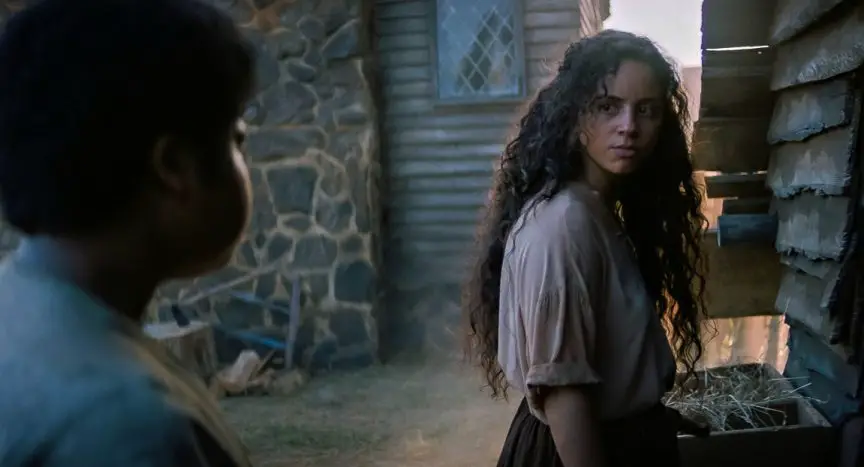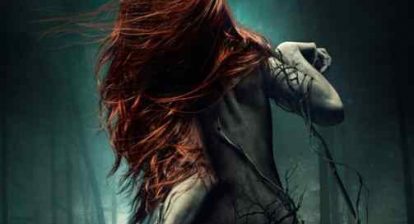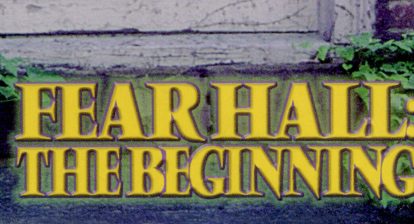Out of the entire Fear Street series, Part Three – 1666 was the most intriguing, at face value. This time period remains curiously under-explored in horror, particularly recently, aside from Robert Eggers’ celebrated The Witch. For the teen audience this series is aimed at, there’s nothing in recent memory to give a sense of what scary movies set way back when would actually look like. However, the decision not to release the Fear Street movies in chronological order makes more sense when you consider that Part Three isn’t set wholly in 1666. Rather, the first hour takes place there before we’re spirited back to 1994 once again for a sneaky follow-up to that film’s Part 1 (got all that?). Still, why the 1666 installment couldn’t have come first regardless, book-ended by another part set during a different time period, if necessary, still jars. We know Sarah Fier’s fate, so where exactly is the requisite tension supposed to come from?
Related: Fear Street Part 1: 1994 Tries to Do Too Much [Review]
Part Three begins right where we left off with Deena (Kiana Madeira) transported back in time, where she’s taken on the body of Sarah herself. Other actors from the trilogy pop up too, including Sadie Sink and Emily Rudd from Part Two, Deena’s brother, Josh (Benjamin Flores Jr.), once again playing her brother, and her dearly departed high school buddies (Julia Rehwald and Fred Heichinger). Although casting the same actors to play different roles is an enticing experiment, here it robs us of the opportunity to get to know any of these characters, since zero attempt is made to flesh any of them out, with the filmmakers assuming just recognizing their faces will do the job. It’s also unclear whether the actors are playing younger versions of themselves, or simply taking on other people’s identities, because both seem to be the case – Deena is obviously Sarah Fier, but Ashley Zukerman plays Solomon Goode, ancestor of Sheriff Nick from the present day.
Still, Zukerman is easily the strongest actor of the core, mostly-1994 cast, so spending more time with him is hardly a chore. The actor bears a striking resemblance to Jake Gyllenhaal in Nightcrawler during the modern sequences but, here, he’s reminiscent of the great Irish actor Emmett Scanlan, which is a real slight considering the unforgivably terrible attempts at Irish accents on display from the largely American cast. Having all of these people do bizarre variations on what they consider Irish – some are northern, some southern, others simply neglect to pronounce their “G”s in words such as “living” – is a truly baffling choice, and one that should’ve been immediately reconsidered once the filmmakers realized not one of these performers could do it convincingly. Seriously, one actor is so bad the accent sounds almost Icelandic.

Madeira’s attempt is particularly egregious, which is infuriating considering she’s in virtually every scene. As it turns out, Sarah Fier was punished for her same-sex dalliance with buddy Hannah Miller (hint hint), played by Olivia Scott Welch, who also portrays Deena’s 1994 love interest, Sam. She wasn’t really a witch at all but, when the town turned on her, Sarah cursed them for all eternity, a plague o’ both your towns as it were. The person who really made a deal with the devil is blindingly obvious but, as with the revelation that Gillian Jacobs was playing grown-up Ziggy in the previous installment, it’s treated as a massive, earth-shattering reveal. I won’t spoil it here, but it’s fairly nonsensical, especially when it seems like the person in question could just write Deena, Josh, and everybody else’s names on the wall once they’ve figured out their plan.
Only setting half of Part Three in 1666 is kind of a cop out, but the scariest thing about it is those damn accents, as well as some dodgy wig work on the male stars, so maybe it’s best we only waste an hour with this dull, half-baked origin story. Once again, it’s difficult to say whether Sarah’s story simply isn’t compelling enough or Madeira isn’t a strong enough performer to carry it, but the queer element, while well-intentioned, has felt curiously lacking throughout and that feeling continues in Part Three even as Deena fights to save Sam’s life. Likewise, there’s nothing that even compares to the horrors of The Witch, with series director Leigh Janiak and her co-writers Kate Trefry and Phil Graziadei still playing things frustratingly safe. Likewise, the set feels like a medieval tourist attraction – truly, the opening segment of Hocus Pocus felt realer.
The color-sapped cinematography, by Caleb Heymann, who lensed the other parts as well as working on Stranger Things, which explains the series’ similarly televisual look, is lovely and it’s refreshing to see people of color in a period setting like this, especially as, when the time comes to accuse Sarah of witchcraft, all those lining up to do so are conspicuously white men. Once the action returns to 1994, it grinds to a halt, with the narrative following essentially the same blueprint as Part 1 as even more identikit killers show up to, as Deena says at one point, “kill and murder” (I sincerely hope I misheard that line because yikes). At least the action returns to the mall, which is easily the strongest location Fear Street has to offer, drenched in neon and full of fun nineties quirks including a Discman, which inspires a rant to which plenty of those watching at home will relate (unless they’re too young).

Problem is, once the gang actually gets there and the requisite “save Shadyside!” speech is out of the way – side note: why are these people suddenly so desperate to save the town? Isn’t it a horrible place to live? Don’t they hate it? What’s changed!? – there’s nowhere for the story to go. The remainder of the movie is dedicated to fighting the killer squad and saving Sam, which means defeating the ultimate evil in a manner befitting this series’ reliance on nonexistent PG tension above actual scares. The neon blood looks terrific, but not nearly enough of it is spilled. Thankfully, the aggravating needle drops are kept to a minimum, with The Offspring’s “Keep ‘Em Separated” standing out as this installment’s coolest choice. As the final moments drag on, however, it’s almost as though someone behind the scenes was panicking about getting as much era-appropriate music in as possible so, in alarmingly quick succession, we get an Oasis cut (truly the worst the nineties had to offer) followed by two more Pixies songs. Seriously, does anybody love Pixies this much!?
Related: Fear Street Part Two – 1978 is a Major Step Up From Part 1 [Review]
Certain things are left unexplained, of course, since obviously Fear Street is being eyed as an ongoing franchise, like what the hell was Ziggy doing with all those clocks? Although there’s plenty to like about this trilogy, there’s simply no justification for three, incredibly bloated, almost two-hour-long movies rather than six streamlined episodes of a TV series, with the tension hopefully being built gradually over time. There’s still no sense of danger, no risks taken – hell, the Goosebumps movie adaptation was riskier than this, and Slappy was a better villain than any of these monsters, which is really saying something – and the performances are as weak and uninspired as the violence. In fact, a smash cut of all the murders that took place over the trilogy is hugely unflattering and puts into perspective just how toothless this whole endeavor was. Hopefully, if Fear Street does continue, the filmmakers will take into account that the first word in that title isn’t just garnish.
WICKED RATING: 4/10
Director(s): Leigh Janiak
Writer(s): R.L. Stine (books), Leigh Janiak, Phil Graziadei, Kate Trefry
Stars: Kiana Madeira, Ashley Zukerman, Olivia Scott Welch, Benajim Flores Jr., Sadie Sink, Emily Rudd, McCabe Slye, Gillian Jacobs
Release date: July 16, 2021
Studio/Production Company: Netflix
Language: English
Run Time: 114 minutes




